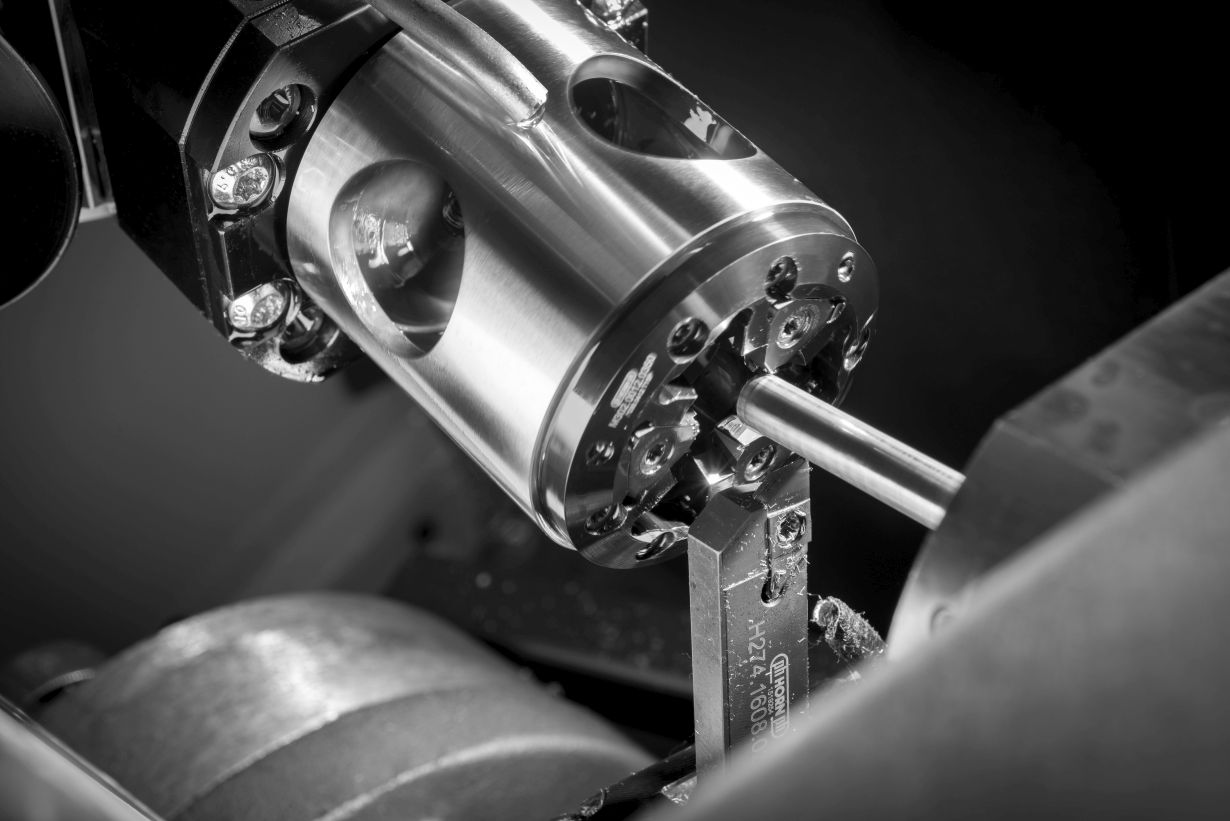Quality of products largely depends on the properties of their individual components: do the screws withstand maximum loads? Is the material used strong enough? Often, manufacture already determines later performance of the component. Manufacturing processes, such as turning, milling or hammering, have a big impact on the properties, functionalities, and qualities of screws or gearwheels. Manufacturing engineers of Karlsruhe Institute of Technology (KIT), hence, study new processes based on the specific use of material/tool interaction for the manufacture of components of higher quality with a reduced consumption of resources.
To reach long service lives and high qualities of components, it is important to use a material that guarantees later functioning under the loads expected. “This applies to components of jet engines or energy plants, which have to survive high thermal and mechanical loads,” says Dr. Frederik Zanger, chief engineer of KIT’s Institute of Production Science (wbk). Due to their favorable properties, titanium alloys are frequently used materials. Although they ensure good functionality of the component, however, these materials complicate the manufacturing process: “The materials are very strong and heat removal from the point of machining is very limited,” Zanger says. This results in a high load on the material and accordingly high wear. Deformed or blunt cutting edges may damage the material and deteriorate component properties. “When knowing more about the progress of tool wear and its interaction with the component surfaces, we can adapt process conditions to reduce wear and to reach the best possible component properties,” Zanger adds.
With the help of simulations, engineers test various settings of manufacturing processes and reproduce tool wear as well as states and properties of the component. The results are used by the wbk to improve existing and develop new combined processes. Within the framework of a joint project funded by the Federal Ministry of Education and Research, for instance, researchers have optimized conventional whirling. The method is used to mill precise threads into bone screws, among others. However, the material between thread and screw head first has to be cut by turning. Only then do the whirling tools start to cut the thread. If both processes take place successively, time and material are needed. For better efficiency, wbk has developed the method of rotary whirling that combines both processes. “The challenge lies in the different rotation speeds,” Zanger explains. “To properly remove the material by turning, the workpiece has to rotate at high speed. But whirling so far has taken place at a very slow rotation speed only.” With his team, he analyzed both processes and adapted the cutting tools to rotary whirling. The new process kinematics reduces the loads acting on the cutters without increasing kinematic roughness. This has both technological and economic advantages.
After machining, highly loaded surfaces are finished mechanically to improve roughness, hardness or residual stress. “By combining both process steps, we can save time and reduce material consumption,” Zanger says. For this purpose, the method of complementary machining has been developed by his group. Contact between the tool and the component hardens the surfaces which results in improved properties and a longer service life. Engineers have studied the basic mechanisms on the laboratory scale and now want to transfer the results to an industrially relevant process. The associated project will be funded by the German Research Foundation (DFG) until December 2020. “Complementary machining produces surfaces, whose service lives are comparable with those of surfaces treated with conventional mechanical methods,” Zanger summarizes.
Soon, the chief engineer and his team will start another DFG project to combine two manufacturing processes: the hammering-turning process combines machining with mechanical surface hammering. “We want the cutter to not only cut the component, but also to harden the surface by hammering.” Again, it is aimed at producing a component with optimum properties and reducing the consumption of resources needed for manufacture. “We would like to better understand combined processes and will continue to develop other ideas along this line.” For his excellent achievements in manufacturing engineering, Frederik Zanger was granted this year’s Otto Kienzle Commemorative Medal by the German Academic Association for Production Technology (WGP).
Being “The University in the Helmholtz Association”, KIT creates and imparts knowledge for the society and the environment. It is the objective to make significant contributions to the global challenges in the fields of energy, mobility, and information. For this, about 10,000 employees cooperate in a broad range of disciplines in natural sciences, engineering sciences, economics, and the humanities and social sciences. KIT prepares its 22,800 students for responsible tasks in society, industry, and science by offering research-based study programs. Innovation efforts at KIT build a bridge between important scientific findings and their application for the benefit of society, economic prosperity, and the preservation of our natural basis of life. KIT is one of the German universities of excellence.

